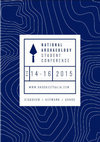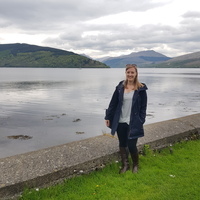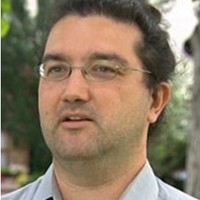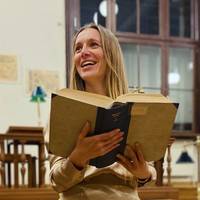Thesis by Harriet L Donnelly Aquilina

The identity of the “Celts” has played an integral role in the understanding of the Iron Age and ... more The identity of the “Celts” has played an integral role in the understanding of the Iron Age and the more recent socio-political history of Europe. However, the terminology and attitudes which have been in place since the 19th century have created a field of research characterised by assumptions about a ‘people’ and a culture. Study of the “Celts” has been conducted in three main areas - genetics, linguistics and material culture from the archaeological record. Through the reassessment of these three fields, substantial divergence in the patterns and trends, as well as the highly regional nature of the evidence has been revealed within the vast interconnected trade and communication network that developed in Iron Age Europe. As a result the unitary phenomenon identified under the term “Celts” is actually that network. “Celtic” should be redefined as the label for that trade and communication network, not as a label for a group, culture or people, enabling the establishment of new identities for the regional populations of the European Iron Age.
Papers by Harriet L Donnelly Aquilina

The identity of the “Celts” has played an integral role in understandings of the Iron Age and the... more The identity of the “Celts” has played an integral role in understandings of the Iron Age and the more recent socio-political history of Europe. However, the terms and attitudes which have been in place since the 19th century have created a field of research characterized by assumptions about a ‘people’ and a culture. Previous study of the “Celts” has been conducted in three main areas—genetics, linguistics, and material culture from the archaeological record. Through the reassessment of these three fields, substantial divergence in the patterns and trends between fields, as well as the highly regional nature of the evidence has been revealed within the vast interconnected trade and communication network that developed in Iron Age Europe. As a result, the unitary phenomenon identified under the term “Celts” is actually that network. This paper argues that “Celtic” should be redefined as the label for that trade and communication network, not as a label for a group, culture, or people, enabling the establishment of new identities for the regional populations of the European Iron Age.
Conference Papers by Harriet L Donnelly Aquilina

The establishment or development of any settlement will require a reliable supply of fresh water.... more The establishment or development of any settlement will require a reliable supply of fresh water. The vital nature of this resource creates a significance for water in any discussion of the interaction and relationship between humans and their landscape. During periods of transition, the importance of this relationship, and the effect it has on the development of settlements, can be examined. From the 5th century AD, following the decline of the Roman period in Western Europe, and on into the 12th century AD, the manner in which many of the water systems were used shifted, while other uses remained constant. The movement of various groups into new parts of the continent resulted in changes to the expression of the human relationship to water systems in the urban structures across Western Europe. Places such as Londinium/Ludenwic experienced a significant transition from their previous urban layouts, while others, including Cordoba, appear to continue to function within the original Roman boundaries. This paper seeks to examine the impact that the relationship between the communities that lived in these settlements, and the water systems that they used, had on the urban development of these sites. Does the change or continuity that is displayed through the sites urban development reflect this dynamic relationship? Through examining how water has impacted communities’ decisions regarding their settlements across Europe on a broader scale, wider trends during this period can be identified and understood alongside regional variation to enable a more complex understanding of the nature of the relationships between Early Medieval communities and their landscapes.

The settlements of Western Europe experienced a period of significant transition following the de... more The settlements of Western Europe experienced a period of significant transition following the decline of Roman control in the 5th century AD. The movement of people and ideas resulted in change and reorganisation for many communities living in what had previously been Roman settlements. Such developments occurred both within the boundaries of the old structures, and by expanding or moving beyond those existing limits. Many of those sites which saw significant change developed slowly over a longer period of time, often not taking the recognisable Medieval shape until at least the 12th century. This paper examines the developmental stages that occurred at two settlements which saw significant changes from the 5th to 12th centuries AD; London and Tours. Both developed according to a pattern of twin towns with the two halves divided by a small area with limited occupation. London and Tours were both hugely important settlements and a comparative discussion of respective changes at each site during this period highlights the various methods by which such settlements developed as well as providing insight into both a trade driven and monastic model of the twin town phenomenon. Examination of these sites and how they changed during the Early Medieval period, will enable a deeper understand of the complexity of urban development and transitional processes.

Following the decline of the Roman period across Western Europe, the nature and form of urban are... more Following the decline of the Roman period across Western Europe, the nature and form of urban areas dramatically diversified. This was highly influenced by the increased interactions and invasions by various cultural groups including the Islamic movement into Spain and arrival of the Anglo Saxons and later Vikings into the British Isles. Furthermore the changes in religion and the way that these new powers interacted with the administrative, royal and lay divisions of society also had an impact on the way that urban centres developed. The layout and functional use of space within the urban centres changed during the following centuries (AD 400 – 1100) resulting in recognisable regional patterns. Research has already identified these regional variations and extensive work has been done on the trading centres of the British Isles and monastic towns in France. This paper seeks to outline the typology of urban centres in Western Europe through key examples such as London, Tours and Cordoba and to bring the Islamic urban centres of the Iberian Peninsula into the discussion through analysis of maps, town plans and reports from archaeological excavations. Through examining the regional variations in a broader European context, a larger pattern or urban centre development emerges that is significant for our understanding of post-Roman Europe as a whole and how the concept and execution of urbanism changed from the formal planned Roman towns to the archetypal medieval walled city.

The Islamic towns in Spain and Portugal tend to be perceived separately from the “Dark Ages” of E... more The Islamic towns in Spain and Portugal tend to be perceived separately from the “Dark Ages” of Europe. Due to elements of a common Islamic urban structure, towns in the Iberian Peninsula of late Antiquity and the Early Medieval period are frequently looked at in relation to the towns of North Africa and further east, instead of those of Western and Central Europe. In
examinations of urban identity of Europe in the aftermath of the Roman Empire, this has kept Iberian towns apart in an
apparently separate, external process of urban development. However, the redefinition of the “Dark Ages” as culturally
dynamic and the continuity of urban infrastructure and occupation at many Roman sites in the Iberian Peninsula makes these cities and their development a vital aspect of the entire range of urban transformation across Central and Western Europe between the 6th and the 11th centuries CE. This paper will discuss the separate treatment of post-Roman Iberian towns from those of the emerging Frankish kingdoms and the British Isles, to explore the importance of including this region in future cross-European studies of urban development and identities.
Conference Posters by Harriet L Donnelly Aquilina

London has a long history as a complex administrative and trading settlement; fortified, fought o... more London has a long history as a complex administrative and trading settlement; fortified, fought over and constantly changing. Therefore, it should not be a surprise that it is a popular choice for the study of urban archaeology. In the post-Roman period, under Saxon control, London existed
across more than one site and along two rivers – the old Roman walled city of Londinium (later to become Lundenburh) and the newer Anglo-Saxon settlement of Lundenwic; both lay along the
Thames separate by the River Fleet. The shift from Londinium over to the wic, and the eventual simultaneous occupation and expansion, meant that from the 5th-11th centuries the use of space began to change, and the role of the church becoming an increasingly significant factor in the layout and function of the urban space of London. This poster examines the shifting uses of space in urban London from the 5th to 11th centuries; specifically the comparative contrast between the use of church and lay space in Londinium, Ludenwic and Lundenburh respectively. Is there an identifiable trend in how these three settlements developed and utilised their space? To what extent did the previous layout and division of urban space continue between settlements? The uses of space, and the changes in this, provide an insight into the shifting attitudes, social,
economic and religious structures of the people of London in the post-Roman period. It reflects the development of urbanism within the British Isles and the dynamic nature of sites like London, which has implications not just for Anglo-Saxon England but in continental Early Medieval Europe as well as for modern urban development.
Conferences Organised by Harriet L Donnelly Aquilina

The National Archaeology Student Conference (NASC) aims to provide students (Undergraduate, Honou... more The National Archaeology Student Conference (NASC) aims to provide students (Undergraduate, Honours, Post-graduate) with a platform from which they can discuss research amongst their peers and receive feedback from judges, who are professional archaeologists/consultants and university academic staff. The scope of NASC encompasses all fields of archaeological inquiry, irrespective of geographical focus. Participation was open to students at Australian and overseas universities. In 2015, NASC was co-hosted by archaeology students of both Macquarie University and the University of Sydney from the 14th-16th of August, hosting over 100 attendees, with over 30 papers and poster presentations from students nationwide. Keynote speakers included Professor Amanda Esterhuysen (University of Witwatersrand, Johannesburg, South Africa -https://wits.academia.edu/AmandaEsterhuysen) and Dr. Aedeen Cremin (University of Canberra - https://independent.academia.edu/aedeencremin).











Uploads
Thesis by Harriet L Donnelly Aquilina
Papers by Harriet L Donnelly Aquilina
Conference Papers by Harriet L Donnelly Aquilina
examinations of urban identity of Europe in the aftermath of the Roman Empire, this has kept Iberian towns apart in an
apparently separate, external process of urban development. However, the redefinition of the “Dark Ages” as culturally
dynamic and the continuity of urban infrastructure and occupation at many Roman sites in the Iberian Peninsula makes these cities and their development a vital aspect of the entire range of urban transformation across Central and Western Europe between the 6th and the 11th centuries CE. This paper will discuss the separate treatment of post-Roman Iberian towns from those of the emerging Frankish kingdoms and the British Isles, to explore the importance of including this region in future cross-European studies of urban development and identities.
Conference Posters by Harriet L Donnelly Aquilina
across more than one site and along two rivers – the old Roman walled city of Londinium (later to become Lundenburh) and the newer Anglo-Saxon settlement of Lundenwic; both lay along the
Thames separate by the River Fleet. The shift from Londinium over to the wic, and the eventual simultaneous occupation and expansion, meant that from the 5th-11th centuries the use of space began to change, and the role of the church becoming an increasingly significant factor in the layout and function of the urban space of London. This poster examines the shifting uses of space in urban London from the 5th to 11th centuries; specifically the comparative contrast between the use of church and lay space in Londinium, Ludenwic and Lundenburh respectively. Is there an identifiable trend in how these three settlements developed and utilised their space? To what extent did the previous layout and division of urban space continue between settlements? The uses of space, and the changes in this, provide an insight into the shifting attitudes, social,
economic and religious structures of the people of London in the post-Roman period. It reflects the development of urbanism within the British Isles and the dynamic nature of sites like London, which has implications not just for Anglo-Saxon England but in continental Early Medieval Europe as well as for modern urban development.
Conferences Organised by Harriet L Donnelly Aquilina
examinations of urban identity of Europe in the aftermath of the Roman Empire, this has kept Iberian towns apart in an
apparently separate, external process of urban development. However, the redefinition of the “Dark Ages” as culturally
dynamic and the continuity of urban infrastructure and occupation at many Roman sites in the Iberian Peninsula makes these cities and their development a vital aspect of the entire range of urban transformation across Central and Western Europe between the 6th and the 11th centuries CE. This paper will discuss the separate treatment of post-Roman Iberian towns from those of the emerging Frankish kingdoms and the British Isles, to explore the importance of including this region in future cross-European studies of urban development and identities.
across more than one site and along two rivers – the old Roman walled city of Londinium (later to become Lundenburh) and the newer Anglo-Saxon settlement of Lundenwic; both lay along the
Thames separate by the River Fleet. The shift from Londinium over to the wic, and the eventual simultaneous occupation and expansion, meant that from the 5th-11th centuries the use of space began to change, and the role of the church becoming an increasingly significant factor in the layout and function of the urban space of London. This poster examines the shifting uses of space in urban London from the 5th to 11th centuries; specifically the comparative contrast between the use of church and lay space in Londinium, Ludenwic and Lundenburh respectively. Is there an identifiable trend in how these three settlements developed and utilised their space? To what extent did the previous layout and division of urban space continue between settlements? The uses of space, and the changes in this, provide an insight into the shifting attitudes, social,
economic and religious structures of the people of London in the post-Roman period. It reflects the development of urbanism within the British Isles and the dynamic nature of sites like London, which has implications not just for Anglo-Saxon England but in continental Early Medieval Europe as well as for modern urban development.